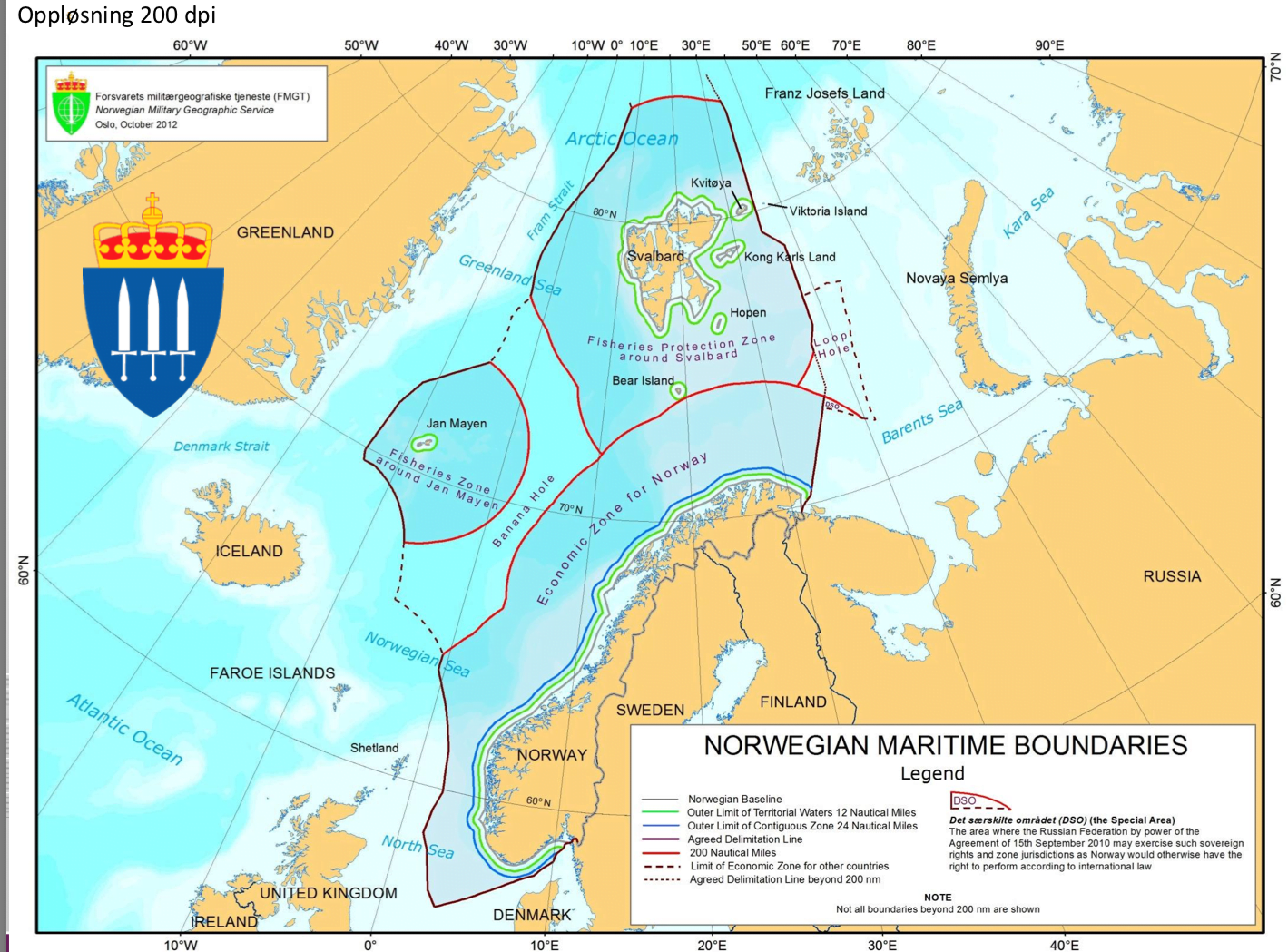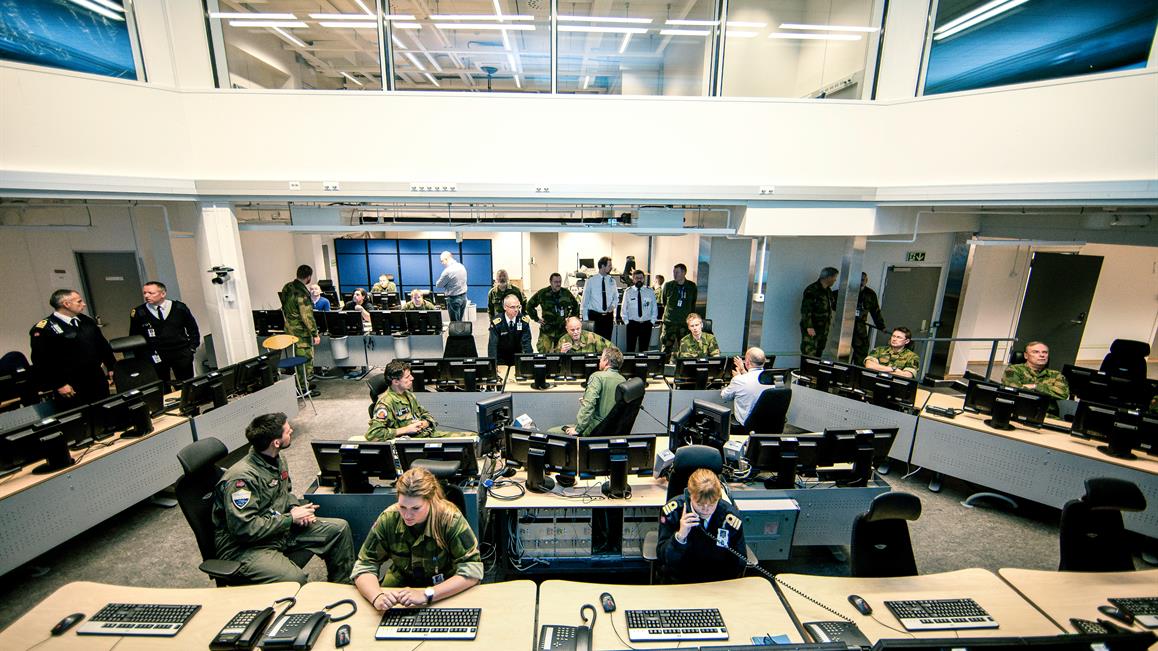By Robbin Laird
The Norwegians are reworking their defense systems to shape a 21stcentury capability which can enhance their own capabilities but importantly work those capabilities into allied ready combat forces.
It is about shaping an effective 21stcentury combat force which when combined with allies provides a very credible deterrent force.
And given the proximity to Russia and the lack of strategic depth, it needs to be deterrence in depth back through the North Atlantic and continental Europe.
The Norwegians are adding new capabilities, like the F-35, the P-8, a new tanker, new missiles and other combat capabilities. But they are reworking their infrastructure as well to work more effectively in both the national and NATO interests.
One aspect of this is reworking the C2 systems within Norway, including building new or rebuilding older, whichever way, one wants to put it, within the Norwegian Joint Headquarters.
According to the Norwegian Ministry of Defence:
The Norwegian Joint Headquarters plans, conducts and leads the Norwegian Armed Forces’ operations in times of peace, crisis and war.
The Norwegian Joint Headquarters (NJHQ) operates day and night, and has the overall command and control of all military activity in Norway. It also commands the Norwegian military personnel abroad.
NJHQ is located in a mountain complex about 22 km from the city of Bodø in Northern Norway. From its joint operation centre, experienced officers continuously monitor the activity in Norway’s vast land and sea territories.
This is possible thanks to our many sensors such as radars, the Coast Guard and the maritime surveillance aircraft P-3 Orion. The headquarters gathers all the information and makes a complete picture of the current situation.
This picture is shared with other departments in the Norwegian Armed Forces, and with NATO.
The NJHQ Commander is the Chief of Defence’s most important advisor in questions concerning military operations and activity.
NJHQ MAIN TASKS:
- Keep an eye with Norway’s vast sea and air territories, and have a current understanding of the overall situation.
- Exercise sovereignty in Norway’s land, sea and air territories – and exercise national jurisdiction in these areas.
- Be present, and be able to handle crisis of any kind.
- Support civil society.
- Plan and lead military exercises.
- Provide control and support to Norwegian forces in international operations.
The operations center is located in a mountain facility and is focused on providing a common operational picture for the forces and for NATO as well as building modern C2 capabilities as well to leverage the changes underway to provide for enhanced situational awareness as well.
Recent Russian exercises have highlighted the importance not only of having rapid acquisition of an accurate combat picture but an ability to rapidly respond with the right force in the right place to defend Norway.
The Russians have been simulating attacks against Norway over the past couple of years. Thomas Nilsen in article published by the Barents Observer on March 5, 2018 provided an overview on recent Russian actions.
“Less than a year ago, on March 24th, Russian bombers were flying tactical flights towards the intelligence service’s installations in Vardø. The bombers were conducting offensive profiles before they returned to bases on Kola. A total of nine aircraft participated in the operation,” said Lieutenant General Morten Haga Lunde in his annual speech at Oslo Military Society….
Two months later, Russian bombers were again simulating an attack against targets even further west in Northern Norway, the intelligence director could tell.
“Also, on the 22nd of May last year were Russian aircraft again flying tactical flights towards a fleet of NATO vessels exercising in the Norwegian Ocean. They conducted offensive operations before they returned to different bases on the Kola Peninsula,» Morten Haga Lunde explained.
“A total of 12 aircraft participated in this operation, including MiG-31, Fencer [Su-24], Fullback [Su-34] and Backfire [Tu-22M]…..”
Russia’s simulated offensive operations against Northern Norway did not stop with that, the intelligence director told.
“Less than a week later, on May 27 was a similar mission directed towards our military installations in the Bodø area. This happened in connection with a larger allied air force exercise led by Norway in cooperation with Sweden and Finland. Nine [Russian] aircraft participated in the operation…”
Talking about Russia’s largest military exercise last autumn, the Zapad-2017, Haga Lunde said Iskander missile systems were moved to an area close to the Norwegian border.
“Another significant element in connection with Zapad it that the missile system Iskander was transferred to the high north, specifically to the Pechenga valley, less than 40 kilometers from Storskog, approx. 15 kilometers from Korpfjell, not far from the border to Norway…..”
At Bodø Airbase, I had a chance to meet with Brigadier General Jan Ove Rygg and to discuss the geographical situation facing Norway as well as the changes being made to enhance the operational picture and to improve crisis management capabilities going forward.
The map below provides one with a sense of how Norway looks at the Russian challenge.
The Russians are building out infrastructure in the High North and even if the primary purpose not might be military, the build out of infrastructure does provide for presence, engagement and can host the operation of dual capable systems.

And the vast maritime zones surrounding Norway provides another challenge to ensure that threats can be identified monitored and dealt with.
With significant shipping in the area, determining anomalies and threats to be dealt with is an ongoing challenge.

It is clearly not a zero sum game with the Russians, as Norway works with Russia on a number of issues, such as fisheries. The two countries collaborate on ensuring that fishing in the maritime zones is regulated and “farmed” rather than exploited.
The goal is to have a sustainable fisheries industry and the two countries cooperate closely on this commercial and environmental objective.
In other words, a major demand is to be able to provide the military and civilian authorities with accurate and timely information through progress in situational awareness capabilities.
Brigadier General Rygg: “Everything that flies in Norway to support the government is operated by the air force.
“This means that we work closely with civilian authorities to provide for capabilities such as search and rescue and coast guard activities.”
With the coming of new ISR capabilities, such as P-8 and F-35, it will be an opportunity to leverage these new systems to enhance the situational awareness picture and to provided targeted information to decision makers to support cricis management efforts as well.
Brigadier General Rygg“I do not want to turn the F-35 into an ISR asset but it can cleaelry contribute to our efforts.
“More generally, the question how do we work ISR and C2 with the new assets?
“How do we use them in ways that inform us and not a potential adversary?”
The High North for Norway is a way of life, not some future scenario of activity being opened by global warming. As such, this means that activity needs to be supported and monitored.
Brigadier General Rygg: “The maritime situation is changing as the Arctic changes and we are seeing significant growth in tourism.
“The problem is that with the large cruise ships, if there is an accident, we will be called upon to contribute assets, which we will do.
“But the best form of working rescue if a large cruise ship goes down will be another ship.”
The change in our ISR capabilities will flow into our National Joint Headquarters. And we need to work those evolving capabilities with evolving C2 capabilities as well.
Brigadier General Rygg: “We are building out new C2 capabilities within the National Joint Headquarters. It is about technology and reworking the workflow.
“We are bringing the key players into a close working relationship within the mountain to provide for better crisis management support as well.”
As infrastructure changes, the focus will as well to provide for crisis management support.
Brigadier General Rygg: “We are shifting from a classic joint targeting approach to a joint effects approach. Every time that you do something with the military, you are creating an effect.
“We are fielding new systems, which provide capabilities we have not had in the past.
“How do we use these systems to create the appropriate joint effect?”
The kind of C2 system needed is clearly an agile, scalable and flexible one.
Brigadier General Rygg: “We may need to provide for mission control where the autonomy of key systems will be maximized.
“We may need to have a tight hierarchical C2 system.
“It depends on the threat; it depends on the mission and on the crisis management situation.
“But we need to build in redundancy and flexibility from the ground up.
“And we are.”
The featured photo shows the Norwegian Joint Headquarters. Credit: Norwegian Ministry of Defence


